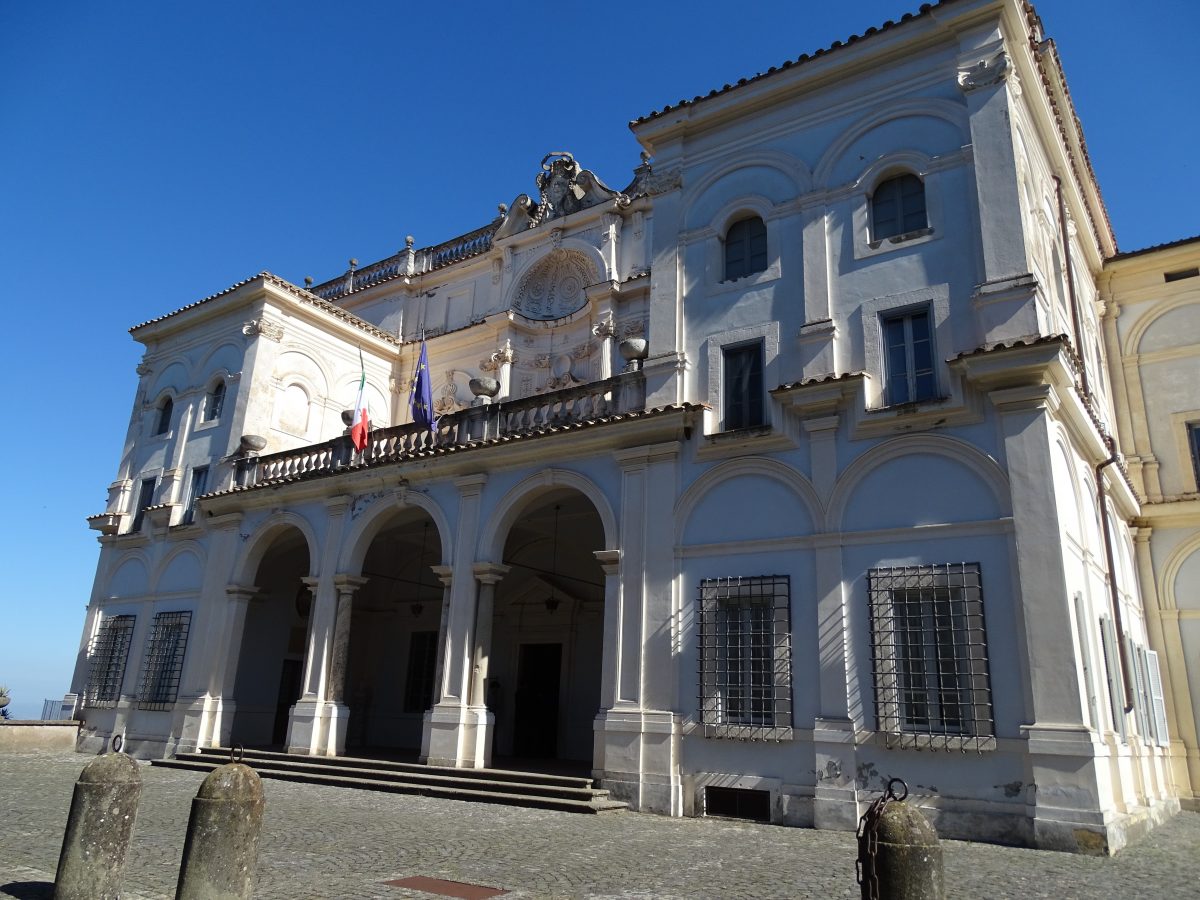It is believed that the initial construction work was attributed to Nanni Baccio Bigio or to another collaborator of Antonio da San Gallo il Giovane, but no certainty exists.
Its actual appearance is due to the work entrusted to Borromini by Paolo Francesco Falconieri during its transformation when the artist incorporated the old structure between two lateral wings and enriched the building with a splendid central niche.
The Peschiera della Galera, Fontana delle Colonne, Peschierone and Fontana della Stella, also belong to this period. The renovation of the gardens was carried out by the architect Ferdinando Fuga between 1724 and 1734, under the rule of Cardinal Alessandro Falconieri.
Many works were destroyed during war bombings but the decorations inside the Stanza della Ringhiera still remain outstanding today, works of Perin del Vaga; The vault in the entrance hall with the Omaggio a Venere (Homage to Venus), a fresco by Niccolò Berretoni, portrays members of the Falconieri family in the lunettes.
In the left wing there are frescoes painted between 1672 and 1680 of the Ratto di Prosperina (the Rape of Proserpine), Allegoria dell’autunno con scena di vendemmia (the Autumn Allegory of a grape harvest), Allegoria della Primavera (the Spring Allegory) and Trionfo di Flora (Flora’s Triumph) by Ciro Ferri. The most outstanding artist was Pier Leone Ghezzi, responsible for most of the decorations, thanks to his important friendship with the Falconieri family.
The history of the villa is distinguished by the great number of owners. In 1563, shortly after being built it was already handed over to Francesco Cenci (Beatrice’s father) by Alessandro Ruffini and not long after purchased by Cardinal Alessandro Sforza. It had further owners including the Gonzaga Family until 1628 when it was eventually given to Orazio Falconieri and his son Francesco who had it completely transformed.
In the 19th century the Falconieri Carpegna inherited the villa and kept it until 1883 when it was sold to Prince Aldobrandini Lancellotti who in turn donated it to the Three Fountains Trappist monks.
In 1905, it was bought by the Prussian Baron Mendelsson Bartholdy who donated it to Keiser Wilhelm II. It was then renovated and became a German school of Fine Art, used as a cultural centre side by side with Villa Medici.
It was confiscated at the end of the First World War by the Italian Government and between 1925 -1928 was assigned to the Directorate General of Antiquities and Fine Art of the Public Education Department. It was later used for a short time by the Ministry of Foreign Affairs and then handed to the International Institute of Educational Cinematography in 1941 and it was given to the Ministry of Aviation in the same year.
During the Second World War, although it was occupied by German soldiers of General Kesselring, bombings over Frascati did not spare the building.
After the war, it once again became property of the Italian Government. The renovation works finished in 1959 when it was assigned to the Ministry of Public Education; for a number of years it was the headquarters of the European Centre for Education (C.E.E.). Since 2000, it has been used by the National Institute for the Educational Evaluation of Instruction and Training (INVALSI).


 Visit Castelli Romani
Visit Castelli Romani 

